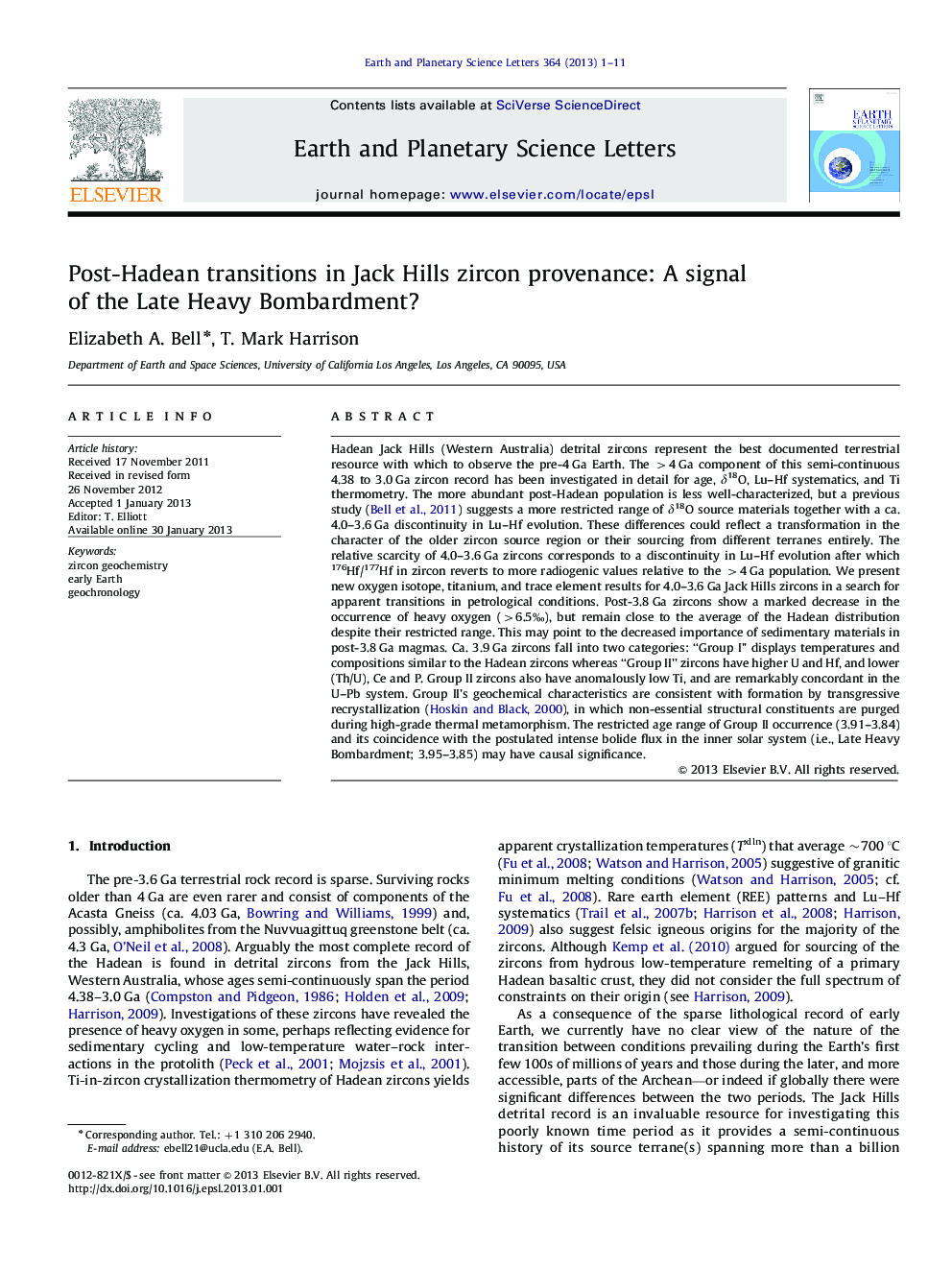| Article ID | Journal | Published Year | Pages | File Type |
|---|---|---|---|---|
| 6430333 | Earth and Planetary Science Letters | 2013 | 11 Pages |
Hadean Jack Hills (Western Australia) detrital zircons represent the best documented terrestrial resource with which to observe the pre-4 Ga Earth. The >4 Ga component of this semi-continuous 4.38 to 3.0 Ga zircon record has been investigated in detail for age, δ18O, Lu-Hf systematics, and Ti thermometry. The more abundant post-Hadean population is less well-characterized, but a previous study (Bell et al., 2011) suggests a more restricted range of δ18O source materials together with a ca. 4.0-3.6 Ga discontinuity in Lu-Hf evolution. These differences could reflect a transformation in the character of the older zircon source region or their sourcing from different terranes entirely. The relative scarcity of 4.0-3.6 Ga zircons corresponds to a discontinuity in Lu-Hf evolution after which 176Hf/177Hf in zircon reverts to more radiogenic values relative to the >4 Ga population. We present new oxygen isotope, titanium, and trace element results for 4.0-3.6 Ga Jack Hills zircons in a search for apparent transitions in petrological conditions. Post-3.8 Ga zircons show a marked decrease in the occurrence of heavy oxygen (>6.5â°), but remain close to the average of the Hadean distribution despite their restricted range. This may point to the decreased importance of sedimentary materials in post-3.8 Ga magmas. Ca. 3.9 Ga zircons fall into two categories: “Group I” displays temperatures and compositions similar to the Hadean zircons whereas “Group II” zircons have higher U and Hf, and lower (Th/U), Ce and P. Group II zircons also have anomalously low Ti, and are remarkably concordant in the U-Pb system. Group II's geochemical characteristics are consistent with formation by transgressive recrystallization (Hoskin and Black, 2000), in which non-essential structural constituents are purged during high-grade thermal metamorphism. The restricted age range of Group II occurrence (3.91-3.84) and its coincidence with the postulated intense bolide flux in the inner solar system (i.e., Late Heavy Bombardment; 3.95-3.85) may have causal significance.
⺠Trace elements reveal a distinctive group of Jack Hills zircons at ca. 3.9 Ga. ⺠Their compositions and internal structures are consistent with metamorphic recrystallization. ⺠The age of this inferred thermal event is coincident with estimates for the Late Heavy Bombardment. ⺠These zircons may provide some of the first terrestrial evidence for the Late Heavy Bombardment.
